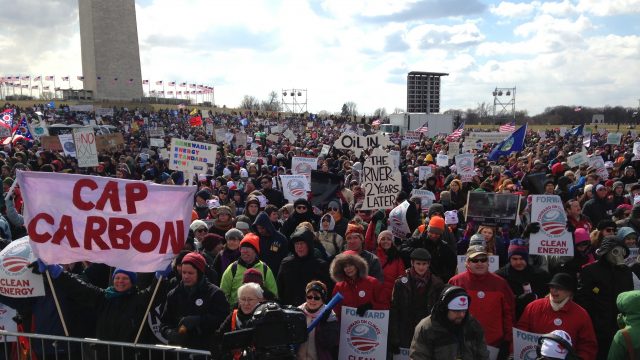95% Of Models Showing Global Warming Are Wildly Inaccurate

When skeptics of the anthropogenic climate change theories pushed by the left give voice to their skepticism, the argument from the left is usually something along the lines of “it’s science so shut up.”
But what if the science those theories are based on was wrong?
Really, really wrong? Dr. Roy Spencer, a climatologist and former NASA scientist, compares actual warming trends (yes, some warming is happening) with the consensus of 90 climate change models issued since 1978.
What he finds is that 95% of them are off. Most of them way off.
“Whether humans are the cause of 100% of the observed warming or not, the conclusion is that global warming isn’t as bad as was predicted,” he writes. “That should have major policy implications…assuming policy is still informed by facts more than emotions and political aspirations.”
His chart is below. The blue dotted line is the actual, measured climate trend. The black dotted line is the consensus of the various global warming models.

And the policy issue is enormous. Here in North Dakota, Public Service Commissioner Randy Christmann (among others) has warned that the EPA’s draconian emissions standards for new power plants is putting North Dakota’s power grid at risk. Because of “regulatory uncertainty,” there aren’t plans for new power plants despite growing demand in the state.
“Nothing is in the planning stages for new coal plants,” Christmann said, pointing out that alternatives like wind are more expensive and less reliable.
Meanwhile Al Gore, who predicted five years ago that there would be no ice at the North Pole, was wrong again. Not only is there ice, it is 50% thicker than last year:
Satellite data shows that Arctic sea ice was 50 per cent thicker in Autumn 2013 than it was in Autumn 2012, according to the US National Snow and Ice Data Center (NSIDC).
Data from the European Space Agency’s (ESA’s) CryoSat satellite which is equipped to measure the thickness of sea ice using radars shows that Arctic sea ice volumes grew by 50 per cent last year. This is due to an increase in ice thickness, since sea ice extent declined by around 3 per cent.
In a statement issued on 5 February, the NSIDC said: “Preliminary measurements from the CryoSat show that the volume of Arctic sea ice in autumn 2013 was about 50% higher than in the autumn of 2012. In October 2013, CryoSat measured approximately 9,000 cubic kilometers (approximately 2,200 cubic miles) of sea ice compared to 6,000 cubic kilometers (approximately 1,400 cubic miles) in October 2012.”
Don’t expect Gore or any part of the “scientific consensus” behind the global warming narrative to apologize for misleading the public.




